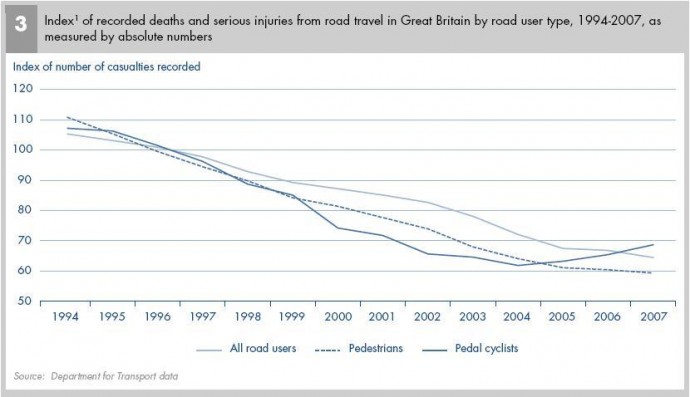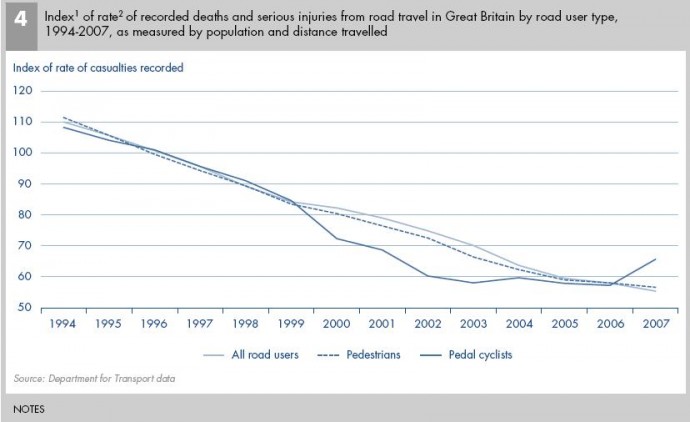- News
- Reviews
- Bikes
- Accessories
- Accessories - misc
- Computer mounts
- Bags
- Bar ends
- Bike bags & cases
- Bottle cages
- Bottles
- Cameras
- Car racks
- Child seats
- Computers
- Glasses
- GPS units
- Helmets
- Lights - front
- Lights - rear
- Lights - sets
- Locks
- Mirrors
- Mudguards
- Racks
- Pumps & CO2 inflators
- Puncture kits
- Reflectives
- Smart watches
- Stands and racks
- Trailers
- Clothing
- Components
- Bar tape & grips
- Bottom brackets
- Brake & gear cables
- Brake & STI levers
- Brake pads & spares
- Brakes
- Cassettes & freewheels
- Chains
- Chainsets & chainrings
- Derailleurs - front
- Derailleurs - rear
- Forks
- Gear levers & shifters
- Groupsets
- Handlebars & extensions
- Headsets
- Hubs
- Inner tubes
- Pedals
- Quick releases & skewers
- Saddles
- Seatposts
- Stems
- Wheels
- Tyres
- Health, fitness and nutrition
- Tools and workshop
- Miscellaneous
- Cross country mountain bikes
- Tubeless valves
- Buyers Guides
- Features
- Forum
- Recommends
- Podcast
news
 audit report front cover
audit report front coverNational Audit Office says roads are getting safer… but not for cyclists
New figures out today show that while cycling has become much safer over the past 15 years, danger levels experienced a sharp 11 per cent increase in the three years to 2007.
The report shows different trends for different groups with the overall levels of deaths and serious injuries on the roads falling by 11 per cent from 2004 to 2007, but rising by 11 per cent for cyclists over the same time period, despite the amount of cycling staying broadly constant.
The National Audit Office report for the Department of Transport, called Improving Road Safety for Pedestrians and Cyclists in Great Britain shows, nevertheless, that the 2007 figures for deaths and serious injuries among cyclists had declined by 31 per cent on the average figures for the years 1994-1998. Isn't it wonderful what you can do with statistics.
Despite an overall fall in the number of road deaths, the UK is behind other advanced industrial nations in terms of the number of cyclists and pedestrians who are injured and killed on the roads.
In 2007 alone 646 pedestrians and 136 cyclists were killed and 30,000 pedestrians and 16,000 cyclists injured.
London is said to be the most dangerous place for cyclists. The capital claimed the lives of 6.1 cyclists per 100,000 compared to the national average of 4.3 per 100,000, in 2007.
Other findings include;
- Over the last 30 years the average distance people walk each year has fallen by 19 per cent, while the distance people cycle annually has declined by 24 per cent.
- In the last ten years the amount of walking has remained constant at around 200 miles per person per year and cycling has declined from 43 to 39 miles per person per year.
- Nearly a quarter of all trips are one mile or less, and over 40 per cent are within two miles and so potentially suitable distances for cycling or walking.
- Deaths and serious injuries among cyclists rose by 11 per cent from 2004 to 2007, despite the amount of cycling staying broadly constant.
- The number of deaths recorded by the Department on Great Britain’s roads is falling. In 2007, 2,946 people died compared with the average of 3,578 in the five years to 1998, a decline of 18 per cent, while road traffic increased by 16 per cent.
- Serious injuries and deaths have fallen by 41 per cent for pedestrians and 31 per cent for cyclists over the last decade; the figures for deaths alone have fallen for pedestrians by 36 per cent and for cyclists by 27 per cent.
NB: One hundred on the chart is equal to the average for the five calendar years 1994 to 1998, which the Department uses to measure its progress against.
Yesterday the CTC launched its Safety in Numbers research, showing that the places in the country with the most cycling activity have the lowest numbers of cycling casualties.
Their research shows York, Cambridgeshire and Hull are the places with the highest cycle use and are also the safest places in the country to cycle.
Meanwhile in London, which the National Audit Office figures show is the most dangerous place for cyclists, the CTC says bike use has increased 91 per cent since 2000 with a corresponding 33 per cent reduction in the number of cyclist casualties over the same period. All this is firm evidence, says the CTC, that the more cyclists there are, the safer cycling becomes.
Follow the link to the CTC's Safety in Numbers pamphlet
Read the full National Audit Office report
Latest Comments
- David9694 1 hour 3 min ago
Oxfordshire: Potholes 'out of control' and risk to cyclists...
- Motdoc 5 hours 18 min ago
You don't benefit from schools? You've never seen a doctor, a dentist, a teacher, didn't go to school yourself and don't care about the tax paying...
- thax1 6 hours 46 min ago
Another 'sound-alike' mid tier offer, so I get all excited and buy a bunch of them thinking I've got an absolute steal. Only to then realise I've...
- mdavidford 6 hours 55 min ago
first cast out the beam out of thine own eye
- eburtthebike 8 hours 17 min ago
Which is, ironically, very rare.
- mark1a 8 hours 19 min ago
New addition to the fleet, a Specialized Aethos. This is the Comp model, 12 speed 105 Di2, 10r carbon layup in pearlescent white, with upgraded...
- hawkinspeter 9 hours 26 min ago
Local 'nimbyism' dismissed as consensus is new scheme will 'increase footfall'...
- chrisonabike 10 hours 14 min ago
If they're formally recognising phone addiction, and have noted that our eating habits (driven by stuff people want to sell us) are obeseogenic ......
- Secret_squirrel 13 hours 25 min ago
Yes. Just like there's no push rod brakes or U brakes any more. Get with the program granddad.
- dreamlx10 14 hours 2 min ago
Looks like the perpetrators were not Italian


Add new comment
2 comments
I take your point, but the cycling press does have a duty to report on cycling stories that hit the national press, as this one did today.
The Guardian has an interesting follow-up - http://www.guardian.co.uk/commentisfree/2009/may/08/cycling - which includes a quote from Chris Peck of the CTC, criticising the NAO's statistical analysis methods:
"The decision to look at serious injuries since 2004 is entirely unhelpful. They've cherry-picked data to support their point – as statisticians they should be aware that you shouldn't measure changes against a single year.
Using the proper measures for cycle use and injuries shows that since 1994-98 – the baseline the government measure injuries against – cycling has increased by 7% (2005-07) but deaths have fallen by 23%, while KSIs have fallen by 34%."
As you'll see, our story is a little more balanced than most, going in on the fact that while there was this 11% recent increase in danger (albeit calculated using questionable mathematics) cycling in general has become much safer over the past decade and a half.
Fear not!
Apparently one of the big factors that put people off cycling is their fear of getting knocked off and that roads aren't a safe place for a bicycle. If this is the general view point of why people aren't taking to bicycles why is it that road death and accidents seems to be the only news that the cycling press report on? Is there some sort of conspiracy going on or does fear make us better cyclists?